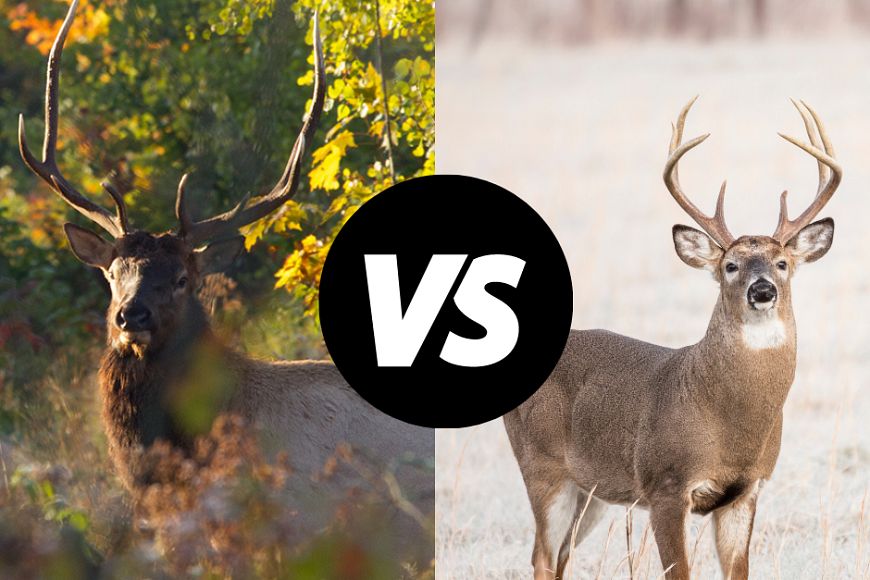Contact: DNR Office of Communications
DNRPress@wisconsin.gov
Know Your Target: Don’t Accidentally Shoot Elk Or Moose This Hunting Season
 Don't shoot an elk during gun deer season. Know your target.
Photo credit: Wisconsin DNR & iStock/rogertrentham
Don't shoot an elk during gun deer season. Know your target.
Photo credit: Wisconsin DNR & iStock/rogertrentham
MADISON, Wis. – The Wisconsin Department of Natural Resources (DNR) reminds hunters to know their target before they shoot and understand the difference between elk and white-tailed deer this hunting season.
Archery and crossbow deer seasons will soon be underway. Elk sometimes venture outside of the elk management zones, especially during the breeding season, so hunters are reminded to properly identify their target. Any elk taken without a tag may result in a fine and a revocation of your hunting license.
How To Identify An Elk:
- Adult elk are larger than adult deer. An adult elk stands about 1-2 feet taller than an adult deer at the shoulders. An elk calf will be about the same size as an adult white-tailed doe but will display similar coloration to adult elk.
- Spot the difference in the antlers. White-tailed deer antlers curve forward, whereas elk antlers are larger and sweep back from their heads.
- Look for color markings. Elk have a tan rump patch, black legs and a dark brown mane. Deer have legs the same color as their bodies, a white throat patch and a fluffy white tail.
- Additional markers. Elk moving throughout the state may have noticeable markers including colored ear tags or tracking collars. These collars are fixed around the neck and are typically orange in color, sometimes with a visible printed number.
Learn about the differences between elk and white-tailed deer below using the DNR’s comparison guide.
Although Wisconsin has not reintroduced moose, there are several verified moose sightings across northern Wisconsin each year. A few hunters may even be lucky enough to see one this fall.
Once widespread across North America, elk were eliminated from Wisconsin in the 1880s. Thanks to the support of many partners and the backing of Wisconsinites, elk were reintroduced within the state in 1995. Through DNR efforts to reestablish the species, the elk herd continues to expand, making it essential for hunters to know their target to protect this growing population.
Currently, there are two herds containing a total of more than 450 elk in Wisconsin reintroduction areas: one in the north including Ashland, Bayfield, Price, Rusk and Sawyer counties, and one in the area surrounding Jackson County. Occasionally, elk can roam beyond these areas, so it is important for deer hunters statewide to be sure of their target.
Observations of elk outside of the management zones, or moose can be reported to the DNR through the Large Mammal Observation Form.
Hunters should follow all firearm safety rules and be sure of their target and what is beyond it. Positively identifying the target ensures the safety of other people and avoids the accidental shooting of non-target animals.

